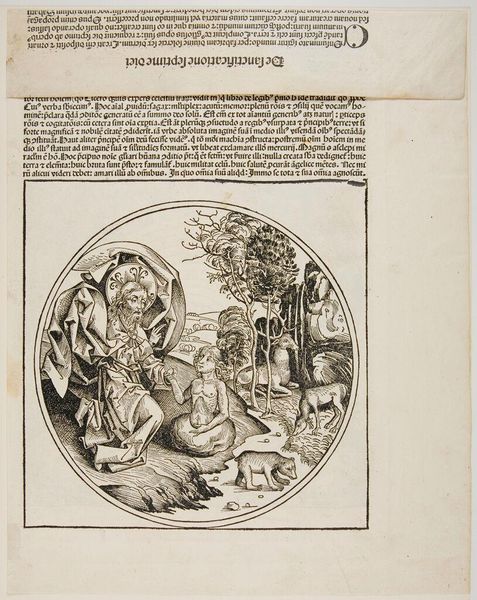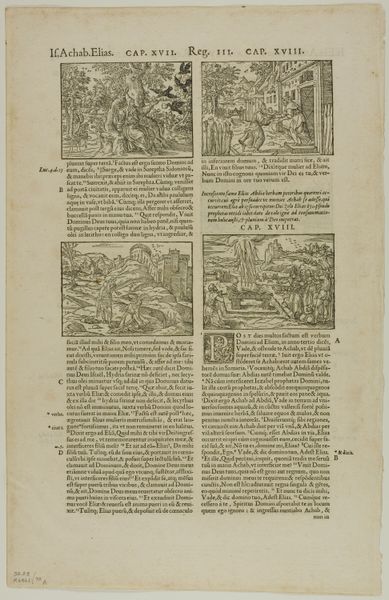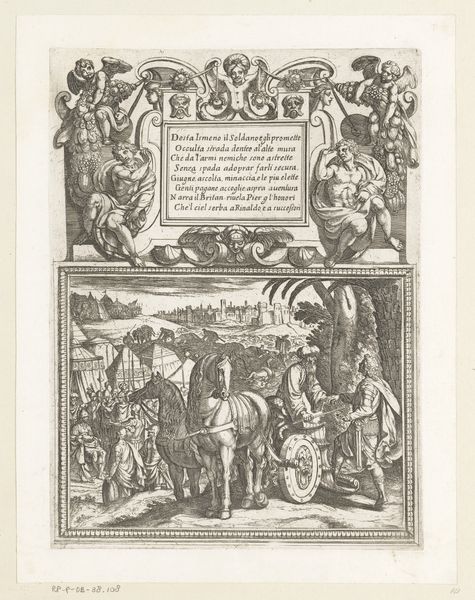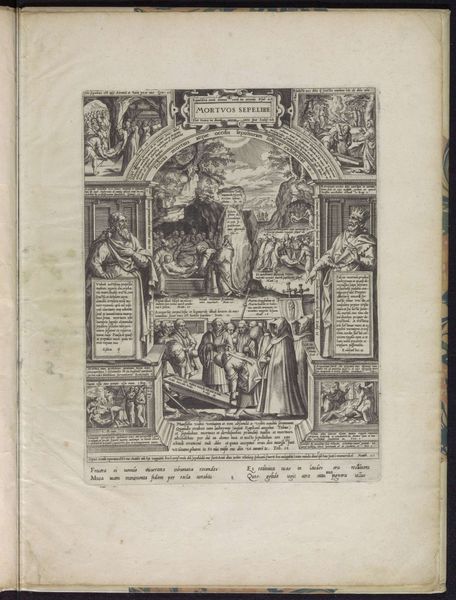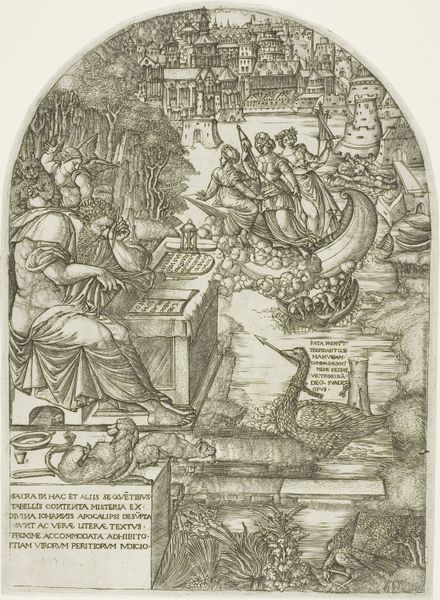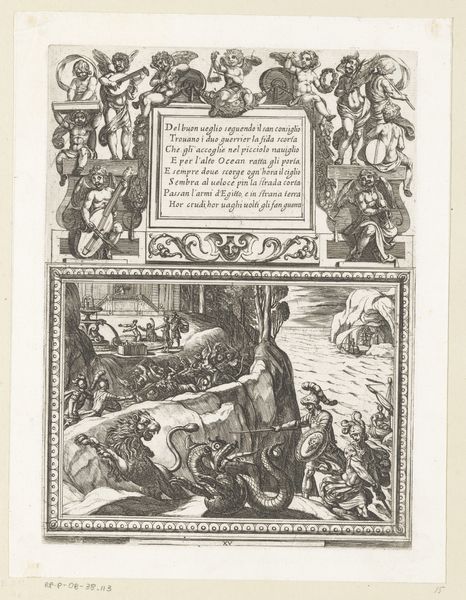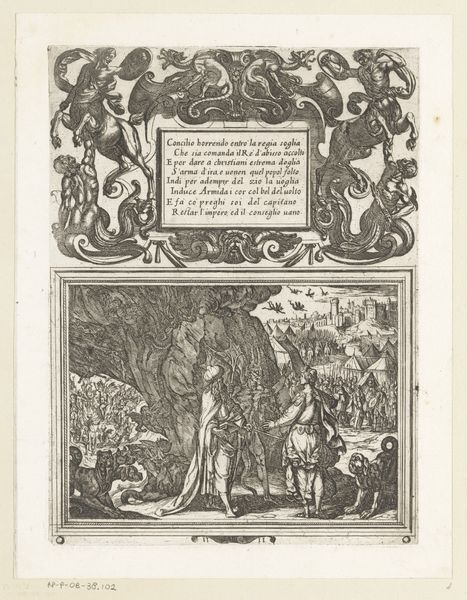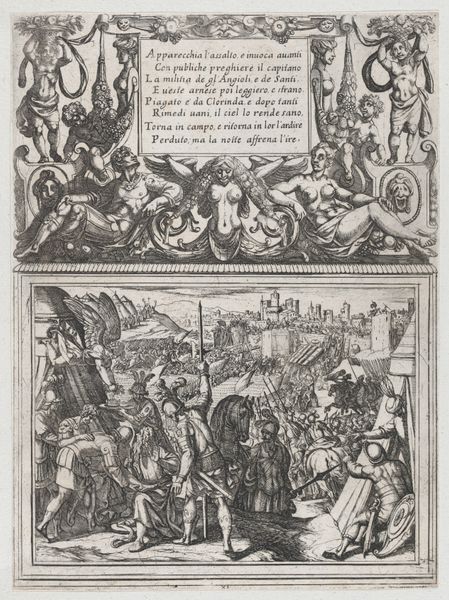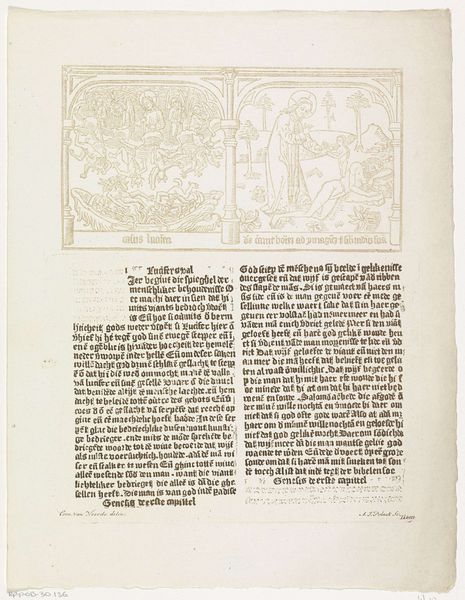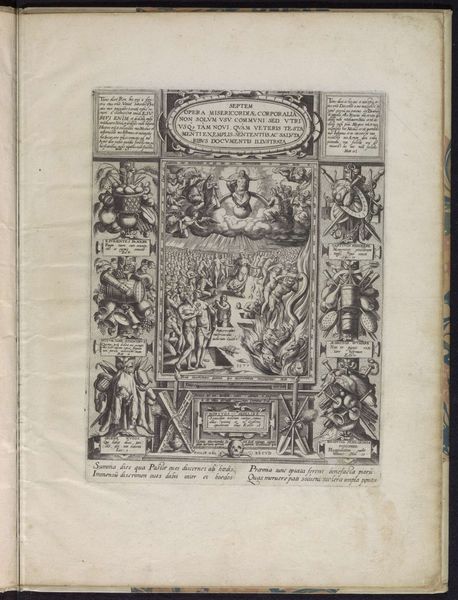
print, woodcut
#
comic strip sketch
#
page thumbnail
#
germany
#
comic strip
# print
#
old engraving style
#
traditional media
#
personal sketchbook
#
sketchwork
#
woodcut
#
sketchbook drawing
#
storyboard and sketchbook work
#
sketchbook art
Dimensions: 14 7/8 x 8 3/4 in. (37.78 x 22.23 cm) (image)
Copyright: Public Domain
This is Michael Wolgemut’s woodcut, "The Sixth Day of Creation," made around 1493, showing the biblical creation of Adam. As a woodcut, this work was made by carving away the negative space around the lines of the image, leaving a raised surface to take the ink. Then, the block was pressed onto paper. The process leaves a distinctive, slightly rough texture, and a graphic contrast between black and white. Consider the labor involved: from felling the tree, to sawing and preparing the block, to the highly skilled work of carving the intricate design. In Wolgemut’s time, printmaking was becoming increasingly important for disseminating information and ideas. It democratized images, making them available to a wider audience than ever before. This particular print, which appeared in the Nuremberg Chronicle, would have brought the story of Genesis to life for a readership eager to understand their place in the world. It is a reminder that even seemingly simple images are the result of complex material processes and social contexts.
Comments
minneapolisinstituteofart almost 2 years ago
⋮
Next to the Gutenberg Bible, the Nuremberg Chronicle was the publishing event of the century. It was no less than a history of the world, beginning with Creation. The Fifth Day shows the arrival of creatures, including one owl rather immune to the august moment. The Sixth Day shows God creating Adam from a mound of clay, his cape swirling like a wheel. The humanist circle involved in publishing the Nuremberg Chronicle would have known Augustine, who had written about the Apostle Paul's reference to God as a potter and to humans as clay (Romans 9).
Join the conversation
Join millions of artists and users on Artera today and experience the ultimate creative platform.
